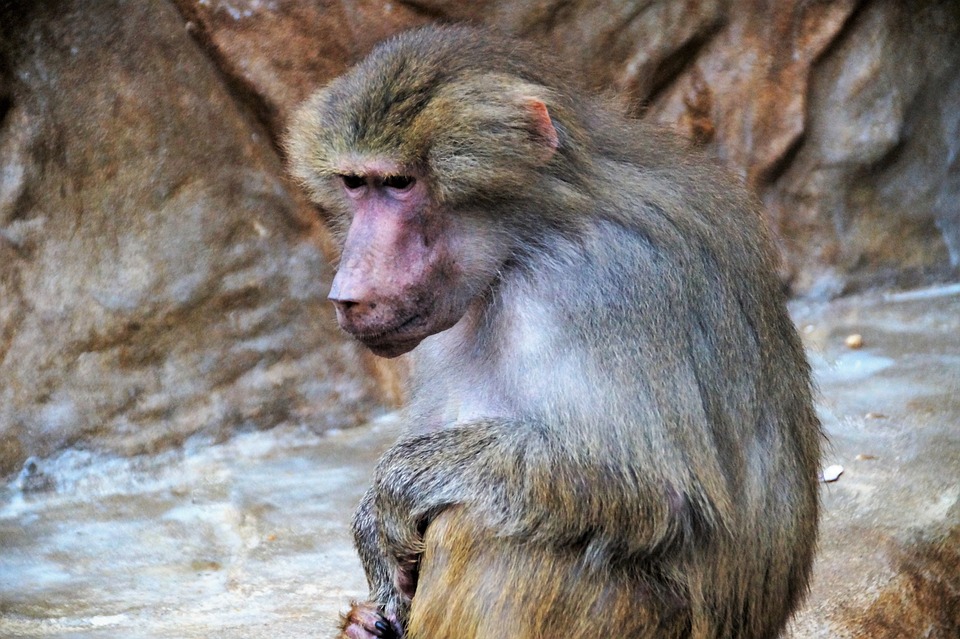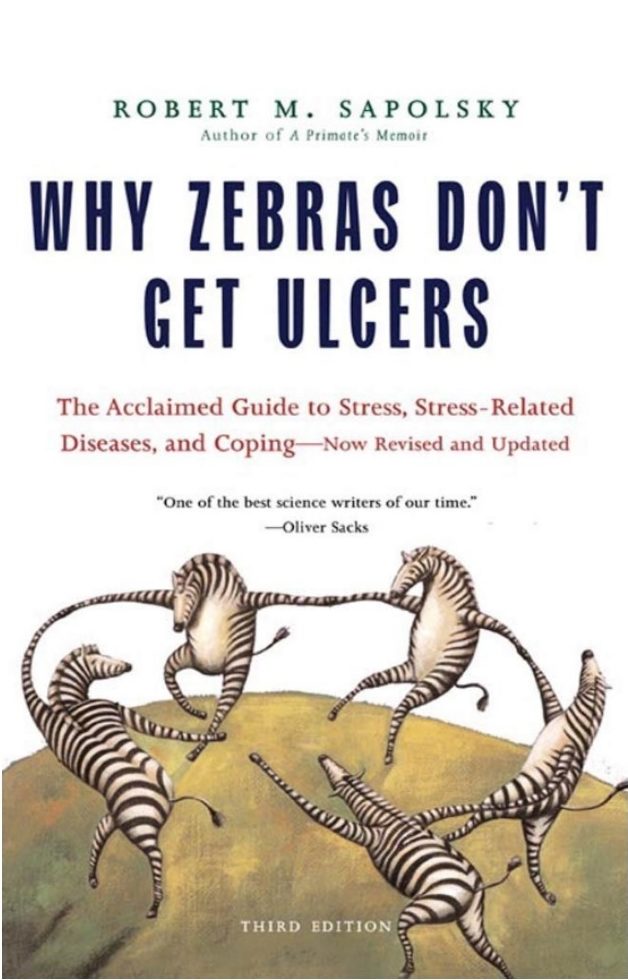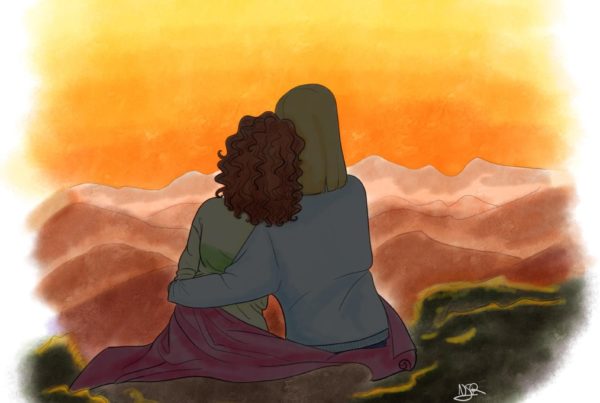
Is there something we can learn from primates when it comes to humankind’s social order and individual life expectancy? Mees Diederik Egeler explores some of our most burning issues using Sapolsky’s book Why zebras don’t get ulcers. Mees shows: there is a lot we can come to understand about our social order, when seen in a biological-evolutionary framework.
Is there something we can learn from primates when it comes to humankind’s social order and individual life expectancy? Mees Diederik Egeler explores some of our most burning issues using Sapolsky’s book Why zebras don’t get ulcers. Mees shows: there is a lot we can come to understand about our social order, when seen in a biological-evolutionary framework.

Image via Pixabay
Being born in the American city Washington, D.C, is a figurative roll of the dice when it comes to one’s life expectancy. In Washington, a sixteen year dissimilarity exists in life expectancy between the individuals living in the poorer neighborhoods of Washington and the people living in the wealthier suburbs (Murray et al., 2006). As shocking as this may seem, this phenomenon is so common in human society that it has its own term: the social gradient (the lower one’s socioeconomic position, the poorer one’s health). The striking question is: why? How does the position you fill in the social hierarchy affect biological pathways that cause disease?
Destitution is one of the causes. Lack of clean water, malnutrition, and circumstances that nurture the growth of microorganisms all contribute to disease. The influences on disease formed by such material deprivation are aggravated by the lack of proper medical care. Yet, this social gradient continues to exist in an area where everyone lives above the level of complete destitution (as seen in Washington). One explanation for this gradient of health might be found in the psychosocial processes related to social experiences. A way to explore this question has been presented in Robert Sapolsky’s book Why zebras don’t get ulcers. In his book, Sapolsky investigates the social hierarchies in nonhuman primates. He introduces the argument that observations about the relation between health and rank in nonhuman primates may give us key insights on how this relation manifests itself in human primates.
“In Washington, a sixteen year dissimilarity exists in life expectancy”
For many social mammals, the presence of a dominance hierarchy is a fact. Even when the ecosystems are rich in resources, they are finite and unevenly divided. Dominant individuals flourish in such circumstances because their dominance causes them to obtain a disproportional large share in the contested and desired resources.
Research has shown that the dominance rank of a primate is related to their state of health. According to Sapolsky, the human social gradient functions similarly, ranking forecasts physiological variances rather than the other way around. Perhaps the most elaborate study on this subject has been done with the population of wild savannah baboons (Papio Anubis) that live in the Serengeti ecosystem of East Africa (Sapolsky, 1992). The duration of the study is striking: a longitudinal study of almost thirty years. In the study, male baboons were the subjects of interest. The male baboon leaves his natal troop at puberty, joining typically one or two other groups over the course of their lifetime. Males create dominance hierarchies that are relatively steady over time, with baboons rising in the hierarchy in early adulthood and descending in late adulthood. The dominant rank which one baboon possesses predicts the access to desirable food, favored resting sites, social grooming and opportunities to mate. When the hierarchy is stable, the dominant males have significant control and certainty in their lives. In contrast, under the same conditions, the social subordinated males receive a disproportionately large portion of stressors. They possess little predictability in their lives and the only way of achieving a higher rank implicates escalated aggression. The results demonstrate that subordinate males differ from the dominant ones regarding certain physiological features. They have high basal levels of resting blood pressure and cortisol and their testicular sperm production is easier inhibited by stress. In addition, they demonstrate lower levels of circulating lymphocytes in the body and lower levels of IFG-1(insulin-like growth factor 1), which is important for maintaining and regulating normal physiology (Sapolsky and Spencer, 1997).
“A stressed primate will show physiological responses similar to those of humans”
Although poor health undoubtedly can lead to a lower social rank, the longitudinal study discussed in Why zebras don’t get ulcers establishes potential proof that the physiopathology correlation of the subordinated males follow the establishment of rank, rather than cause their social rank. Subordinate humans in the Western world aren’t exposed to physical aggression and nutritional scarcity, but a difference in access to luxury resources does exist and aggression is psychosocially experienced. Marmot and Sapolsky conclude that with these premises, the collected data for this population of baboons is abundant for extrapolation from the health gradient of primates to those of humans. Of course, a study on Savannah baboons cannot be solely used to draw a general conclusion about the social gradient of the human population, but a stressed primate will show physiological responses to stressors similar to those (Aiello & Wheeler, 1995). Plus, one clear advantage these baboons do have: their non-humanness. Many factors which cause health inequalities between humans don’t exist with baboons. Baboons don’t smoke, drink, eat fast food or have access to different health services depending on their ability to pay.
That the social gradient exists in our population is something one cannot deny, but the way we deal with it is to some degree within our control. Just like our family, some social hierarchies are given to us at birth. But some social hierarchies are chosen voluntarily, like our group of friends. As Sapolsky’s research shows, the position one takes in the social hierarchy has a tremendous influence on how much psychosocial stress we experience. Choose your social groups wisely, as it has more influence on your quality of life then you might expect. <<

Mees Diederik Egeler is a third years bachelor student Clinical Psychology. He wrote this essay for a course on evolution and behavior.
References
– [Image] Retrieved at April 29, 2019 from https://pixabay.com/photos/monkey-baboon-animal-zoo-primate-4035245/.
– Aiello, L. C., & Wheeler, P. (1995). The expensive-tissue hypothesis: the brain and the digestive system in human and primate evolution. Current anthropology, 36(2), 199-221.
– Murray, C. J., Kulkarni, S. C., Michaud, C., Tomijima, N., Bulzacchelli, M. T., Iandiorio, T. J., & Ezzati, M. (2006). Eight Americas: investigating mortality disparities across races, counties, and race-counties in the United States. PLoS medicine, 3(9), e260.
– Sapolsky, R. M. (1992). Cortisol concentrations and the social significance of rank instability among wild baboons. Psychoneuroendocrinology, 17(6), 701-709.
– Sapolsky, R. M., & Spencer, E. M. (1997). Insulin-like growth factor I is suppressed in socially subordinate male baboons. American Journal of Physiology-Regulatory, Integrative and Comparative Physiology, 273(4), R1346-R1351.
– Sapolsky, R. M. (2004). Why zebras don’t get ulcers: The acclaimed guide to stress, stress-related diseases, and coping. New York City, United States: MacMillan Publishers.
Being born in the American city Washington, D.C, is a figurative roll of the dice when it comes to one’s life expectancy. In Washington, a sixteen year dissimilarity exists in life expectancy between the individuals living in the poorer neighborhoods of Washington and the people living in the wealthier suburbs (Murray et al., 2006). As shocking as this may seem, this phenomenon is so common in human society that it has its own term: the social gradient (the lower one’s socioeconomic position, the poorer one’s health). The striking question is: why? How does the position you fill in the social hierarchy affect biological pathways that cause disease?
Destitution is one of the causes. Lack of clean water, malnutrition, and circumstances that nurture the growth of microorganisms all contribute to disease. The influences on disease formed by such material deprivation are aggravated by the lack of proper medical care. Yet, this social gradient continues to exist in an area where everyone lives above the level of complete destitution (as seen in Washington). One explanation for this gradient of health might be found in the psychosocial processes related to social experiences. A way to explore this question has been presented in Robert Sapolsky’s book Why zebras don’t get ulcers. In his book, Sapolsky investigates the social hierarchies in nonhuman primates. He introduces the argument that observations about the relation between health and rank in nonhuman primates may give us key insights on how this relation manifests itself in human primates.
“In Washington, a sixteen year dissimilarity exists in life expectancy”
For many social mammals, the presence of a dominance hierarchy is a fact. Even when the ecosystems are rich in resources, they are finite and unevenly divided. Dominant individuals flourish in such circumstances because their dominance causes them to obtain a disproportional large share in the contested and desired resources.
Research has shown that the dominance rank of a primate is related to their state of health. According to Sapolsky, the human social gradient functions similarly, ranking forecasts physiological variances rather than the other way around. Perhaps the most elaborate study on this subject has been done with the population of wild savannah baboons (Papio Anubis) that live in the Serengeti ecosystem of East Africa (Sapolsky, 1992). The duration of the study is striking: a longitudinal study of almost thirty years. In the study, male baboons were the subjects of interest. The male baboon leaves his natal troop at puberty, joining typically one or two other groups over the course of their lifetime. Males create dominance hierarchies that are relatively steady over time, with baboons rising in the hierarchy in early adulthood and descending in late adulthood. The dominant rank which one baboon possesses predicts the access to desirable food, favored resting sites, social grooming and opportunities to mate. When the hierarchy is stable, the dominant males have significant control and certainty in their lives. In contrast, under the same conditions, the social subordinated males receive a disproportionately large portion of stressors. They possess little predictability in their lives and the only way of achieving a higher rank implicates escalated aggression. The results demonstrate that subordinate males differ from the dominant ones regarding certain physiological features. They have high basal levels of resting blood pressure and cortisol and their testicular sperm production is easier inhibited by stress. In addition, they demonstrate lower levels of circulating lymphocytes in the body and lower levels of IFG-1(insulin-like growth factor 1), which is important for maintaining and regulating normal physiology (Sapolsky and Spencer, 1997).
“A stressed primate will show physiological responses similar to those of humans”
Although poor health undoubtedly can lead to a lower social rank, the longitudinal study discussed in Why zebras don’t get ulcers establishes potential proof that the physiopathology correlation of the subordinated males follow the establishment of rank, rather than cause their social rank. Subordinate humans in the Western world aren’t exposed to physical aggression and nutritional scarcity, but a difference in access to luxury resources does exist and aggression is psychosocially experienced. Marmot and Sapolsky conclude that with these premises, the collected data for this population of baboons is abundant for extrapolation from the health gradient of primates to those of humans. Of course, a study on Savannah baboons cannot be solely used to draw a general conclusion about the social gradient of the human population, but a stressed primate will show physiological responses to stressors similar to those (Aiello & Wheeler, 1995). Plus, one clear advantage these baboons do have: their non-humanness. Many factors which cause health inequalities between humans don’t exist with baboons. Baboons don’t smoke, drink, eat fast food or have access to different health services depending on their ability to pay.
That the social gradient exists in our population is something one cannot deny, but the way we deal with it is to some degree within our control. Just like our family, some social hierarchies are given to us at birth. But some social hierarchies are chosen voluntarily, like our group of friends. As Sapolsky’s research shows, the position one takes in the social hierarchy has a tremendous influence on how much psychosocial stress we experience. Choose your social groups wisely, as it has more influence on your quality of life then you might expect. <<

Mees Diederik Egeler is a third years bachelor student Clinical Psychology. He wrote this essay for a course on evolution and behavior.



